Silent trains for the future – an industrial approach for low noise design
Siv. Leth, NVH Expert:
Bombardier Transportation, CoC Acoustics Specialist Engineering
Östra Ringvägen 2 , 721 73, Västerås, Sweden
Siv.Leth@se.transport.bombardier.com

S. Leth is a manager for the Global Center of Competence of Acoustics and Vibration at Bombardier Transportation since year 2000. Department Manager for Acoustic Specialists in Vehicle Division in UK, France,Germany and Sweden at Bombardier. Bombardier Principal Specialist since 2006. 30 years experience of vehicle noise control from naval, aerospace, automotive, and railway industry. Member of European Commission Transport Advisory Group for advising on European Research strategies in FP 7. Chairing UNIFE (European Rail Industry) Noise Expert Group. Member in Steering Committees for European Research projects as InMAR and SILENCE in FP6. Author of numerous papers published in international journals and conferenceson acoustics of trains and aircraft and holder of several patents in the area ofactive noise control. Doctoral Candidate Degree (Teknologie Licentiatexamen) in Acoustics, Department of Fluid Mechanics, Luleå Technical University, 1989. M.Sc., Naval Architecture and Marine Engineering, Chalmers Technical University, 1978.
Abstract:
Silence is an increasingly important design parameter for development of new trains. This is true both for exterior noise for reducing annoyance in the environment and for interior noise assuring a high comfort for the passenger. New rolling stock is normally already relatively silent and the challenge to produce even lower noise levels is increasing. In addition, a low noise design must be compatible with all other constraints such as increasing demands on energy efficiency including low weight, high general performance, outstanding reliability, low life cycle cost and so on. Interesting new players are our Asian customers requiring extremely quiet systems.
The target for railway rolling stock industry in a wider sense is to provide vehicles that cause minimal annoyance to wayside residents and provide a pleasant and comfortable environment for the passengers on board. The key word for the future will with this in mind be sound quality. Customer requirements are in a future scenario not formulated in the traditional way based on legislation and noise values on historical rolling stock. Instead customer and manufacturer are sitting together in sound design studios to define the customer requirements together.In an industrial environment a well designed combination of methods must be used to achieve low noise and good sound quality in a new product. The very first task for a new train is to do the source ranking properly and thereafter keep track of the noise budget during the different design phases. A range of methods are used where engineering experience and experimental methods are still very important together with numerical and statistical methods as well as special methods for wheel/rail noise and aeroacoustics.An overview of the approach taken during the different design phases will be described and an outlook concerning future challenges is included.
Noise sources and virtual noise synthesis
Goran Pavić, Professor
Laboratoire Vibrations Acoustique,Insa Lyon
goran.pavic@insa-lyon.fr
http://lva.insa-lyon.fr/
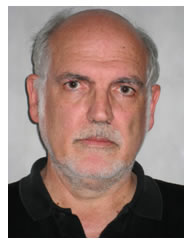
Goran Pavić holds BSc in Mechanical Engineering and PhD in Acoustics and Vibration. After having spent 24 years in research in shipbuilding, electrotechnical and mechanical industries, he was elected to professorship at the National Institute of Applied Sciences in Lyon, France. His duties involve research and teaching in vibration, acoustics and signal processing.
The present research activities of G. Pavić are in the areas of vibroacoustics of mechanical systems, virtual noise synthesis and energy related techniques of sound and vibration analysis. G. Pavić has participated in 9 international projects concerning noise and vibration, out of which in 4 as the coordinator, in several tens of industry funded projects as well as in the European Doctorate in Sound and Vibration programme. He is former associate editor of Acta Acustica and current associate editor of Technical Acoustics; former director of International Institute of Acoustics and Vibration and member of 2 ISO standardisation committees. He has published a number of journal articles and has presented a number of papers on various topics in the field of sound and vibration.
Abstract:
The synthesis of noise of an industrial product, such as a vehicle, can be done by sub-structuring it into its functional components (i.e.engine, chassis, firewall etc). The trends in the overall noise can bethen obtained by combining data from the real source(s) with simplifiedmodel(s) of transmission path(s). The connectivity between the source(s)and the transmission components is ensured via interface continuityrules. The critical components are the noise sources which have to becharacterised by measurements. The characterisation techniques are notsimple, but reveal a lot of useful information to the designer apartfrom providing the input data to noise synthesis. The output of thesynthesis is the noise level and the noise signal enabling an audiblereproduction. The lecture outlines the basics of the source characterisation techniques and of the simplified synthesis approach.
Vehicle NVH Package
Richard E. Wentzel, NVH Expert
Wuxi Jixing Acoustic Auto Parts Technology Co., LTD. (JDL/GSK)
rewentzel@wxjixing.com

Richard joined JDL/GSK in July 2009, and currently is located at their new Research and Development Facilities in Wuxi, Jiangsu Province in the Peoples Republic of China. He holds a BS from the University of Wisconsin, and a MS degree from Wayne State University, and has pursued post graduate studies at Wayne State University, Eastern Michigan University and Michigan State University, all of which are located in the USA.
Richard has over 30 years experience in automotive engineering, most of which focused on automotive acoustics, vehicle sound package development and wind noise. He has over 10 years experience working for prominent US OEM vehicle manufacturers including Chrysler and Ford, where he attained the position of Senior Product Development Engineer. Richard has also worked for world renowned sound package insulation suppliers like Rieter Automotive North America, and Collins & Aikman where he attained the position of NVH Manager. In January 2005, Richard joined Roush Industries in the Detroit area where he led the design and building of a NVH four-wheel-drive chassis rolls dynamometer facility. Following its completion he managed its operation where studies on sound package development, powertrain and driveline were conducted.
Richard has published several SAE papers on automotive sound package technology, has participated in international technical conferences, provided technical training concerning vehicle & material acoustical test techniques to Ford Australia & Germany, and to various OEM’s in Japan and South Korea.
Abstract:
North American auto manufacturers have recognized the need for quiet smooth running vehicle since the 1950's, because their consumer equated this characteristic with quality. Since then technologies have been advanced dramatically, and cab-interior sound levels have been reduced from the lower 60.0 dB range into the 50.0 dB range.
This discussion focuses on the development of the acoustical attenuation package. The process begins with the selection of vehicle NVH performance and acoustical attenuation package weight and cost targets. Once this is accomplished, the NVH engineer must select insulators which are ideally suited to achieve these target values.
Traditionally in North America, NVH development engineers have relied heavily on data obtained by testing prototype vehicles. However, for the past 15 years, computer aided engineering (CAE), has also been employed to develop acoustical attenuation packages. The most popular of these is statistical energy analysis (SEA).
An experimentally based CAE model is proposed which consists of paths contributing acoustical energy to ensemble levels within the vehicle cab. A systematic approach for measuring these path contributions is discussed. The architecture of a model which uses these data along with insulation material data to forecast ensemble levels is discussed.
In North America, auto NVH engineers also rely heavily on subsystem test data. Dash insulator sound transmission loss tests, floor panel and carpet tests are used to determine the best subsystems.
Once the constituent materials of insulators are determined, the parts must be designed. This is difficult because the NVH performance of each insulator can and usually is affected by design compromises. Most are forced by limited package space and many are caused by assembly issues.
Just prior to the launch of production for the vehicle, prototypes are built and tested to determine if the NVH performance targets are being met. Refinements to designs and materials may be made.
Following the launch of production the vehicle, many North America companies engage in value assessment/value engineering (VA/VE). This is a process where each component of the vehicle is assessed for its merit and removed if possible to save cost and weight. This process can continue for several years after the launch of the vehicle.
Noise and vibration perception
Etienne Parizet, Professor
Laboratoire Vibrations Acoustique, INSA-Lyon, France
etienne.parizet@insa-lyon.fr
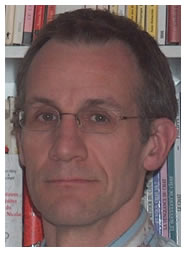
Etienne Parizet holds an engineering degree (Ecole Polytechnique, Palaiseau, France) and a PhD in acoustics (Université du Maine, Le Mans, France); his PhD was about speech intelligibility in cars and founded by the French car manufacturer Renault. Then he worked over twelve years for this company, mainly on the topic of applied psychoacoustics; he also managed the acoustic team of the Research Center.
In 2000, he joined the Vibration and Acoustic Laboratory of INSA Lyon to develop the activity of this laboratory in the field of- acoustic perception. His work is mainly focused on sound perception (investigation on listening test experiments), vibratory comfort and interactions between acoustic and vibratory modalities in a complex situation. Most of this work has been realised in collaboration with industrial companies (car or truck manufacturers, household appliances companies, technical centres,…).
Abstract:
Sounds and vibrations affect car passengers in a complex way. These stimuli can be tiring and annoying, but they also convey information about the running of the car. Moreover, through these stimuli passengers can get an idea of the car quality. It is thus very important for a car manufacturer to know how sounds and vibrations are perceived by a human being – and this is not just a question of physical level.
The talk will present some basics about sound perception and some metrics which can be fruitfully used for the characterization of a product. Tools for sound quality evaluation will be outlined : binaural recording and reproduction devices, listening test procedures. The subject of whole-body vibrations will also be discussed, as well as recent results concerning joint effects of vibrations and noise on passengers during the subjective evaluation of car comfort.
All these topics will be presented through practical examples.
Powertrain Noise and Vibration
Leon GAVRIC, NVH Expert
PSA – Peugeot Citroën Automobiles,France
leon.gavric@mpsa.com

ACADEMIC SKILLS
1984 BSc eng. degree – "Mechanical Engineering", University of Zagreb, Croatia
1988 MSc eng. degree – "Masters - Applied Mechanics", University of Zagreb, Croatia
1991 PhD degree – "Doctoral Thesis", University of Technology of Compiegne, France
PROFESSIONAL EXPERIENCE
1984-1988 Electro-technical Institute "Rade Koncar", Croatia.Development of nonlinear FEM computation techniques; Applied research on NVH of electric generators and railway vehicle dynamics.
1989-2001 CETIM – Technical Center For Mechanical Engineering, France. Development of "vibration power-flow analysis" techniques (computation software); EU research projects: GROWTH-"NABUCCO", BRITE-EURAM- "SILENTA"…; Applied research on HVH of HVAC and refrigerating compressors and systems.
2002-2010 PSA – Peugeot Citroën Automobiles, France. Head of "Powertrain NVH Dpt"; Senior Expert Leader in domain of "Powertrain NVH"; Teacher in "IFP Powetrain School" – NHV of engines.
Abstract:
Today’s automotive market is extremely competitive and in a constant evolution. Withthe diversification of the commercial product range and the increasing pressure fromemission standards, NVH has more than ever become a differentiation factor. In thepast, NVH was considered as a secondary performance. However, the rise of highquality products made car manufacturers change their point of view. It has now become a selective performance, which permits to position a car in the uppercommercial product range, which generates the best profits.
Consequently, for the majority of car makers, the NVH performance of the powertrain becomes an important design target. In order to achieve it, the NVH issue is to be taken into account from early beginning of the development process. The noise and the sound of passenger cars have been dominated by the acoustic characteristics of the combustion engine for a long time. But now there is a change. Over the years acoustic engineers have reduced the sound level of combustion engines in exterior noise as well as in interior noise. So other noise sources, like accessories and servomotors became noticeable and annoying.
The development of low noise powertrains requires NVH optimization to begin during the early design phase, because specific design features can predefine the sound design potential of the powertrain. Virtual development tools and methods (FEM and BEM computation, non-linear multi-body dynamics …) are a prerequisite for effectively reducing the expense and time required for NVH development. In addition, these tools and methods reduce the effort for troubleshooting during the vehicle integration process, while simultaneously increasing product quality.In order to achieve a high level of refinement, NVH engineers must deliver recommendations prior to the design freeze dates. This is ensured through the use of appropriate computation models, which produce reliable results within an acceptable simulation time.
Aerodynamic power train noise - modelling and case studies
Mats Åbom, Professor
Kungliga Tekniska Högskolan,SE-10044 Stockholm, Sweden
matsabom@kth.se

Mats Åbom is since 2000 a professor in Technical Acoustics at the department of Aeronautical and Vehicle Engineering at Kungliga Tekniska Högskolan (KTH). Mats is also head of the acoustic division at the department, the Marcus Wallenberg Laboratory (MWL) for Sound and Vibration Research.
Mats has a M.Sc. in Engineering Physics and a PhD in Technical Acoustics obtained in 1989, both from KTH. After his PhD Mats continued his research at KTH including a short research visit to LAUM in France and obtained the "Docent" title in 1995. During the years 1996-2000 Mats worked at ABB Corp Research as main project leader on projects concerning active control and noise control of fans and gas turbines. In November 2000 Mats came back to KTH to a new position as professor in Technical Acoustics with focus on Flow Acoustics.
Mats main research areas are concerned with the generation and propagation of sound in fluid machinery systems in particular related to interior flows, i.e., pipe and duct systems. The applications range from household appliances and ventilation systems to intake and exhaust systems on vehicles and power plants. Mats has published over 30 papers in international peer-review journals and more than 70 papers at international conferences. He is regularly doing reviews for leading international journals and receives invitations to international conferences.
Mats and the Flow Acoustic group at MWL is strongly involved in both national and European projects. Among other things the group is a partner in one of the new centres for excellent researchers created at KTH by the Swedish Research Council, the Linne FLOW Centre. The group is also a partner in the KTH CICERO centre, which focus on research regarding efficient gas management in internal combustion engines.
Concerning teaching Mats has developed a post-graduate course in Flow Acoustics plus participated in the creation of a special M.Sc. program in Sound&Vibration at KTH. He supervises around 4-5 M.Sc. student projects per year and is presently the main supervisor for 5 PhD projects.
.
Abstract:
The Marcus Wallenberg Laboratory (MWL) at KTH has a very strong competence related to transportation noise. The laboratory has participated in many EC-projects and is also partner in two KTH competence centres (ECO2 and Cicero) focused on developing more environmentally friendly transportation. In these centres MWL co-operates with leading manufacturers such as: Volvo Trucks, Volvo Cars, Scania and Bombardier.
Exterior noise emission from road vehicles can be attributed to the engine and transmission, normally referred to as power train noise, or to tire-road noise. Power train noise is dominating at low speeds 30-60 km/h in particular at start/stop and acceleration, i.e., for the typical driving conditions inside cities. For higher speeds tire road-noise becomes the dominating source and is the main noise source for roads with speed limits higher than 50 km/h. In this lecture the focus will be on aerodynamic power train noise, i.e., the part of this noise related to the engine gas exchange (intake&exhaust noise) and to the engine cooling via a fan. Generally speaking problems related to aerodynamic power train noise are increasing due to the current trends with exhaust gas cleaning and more energy efficient engines. Two reasons being that these trends lead to an increased use of turbo-charging and need for cooling.
First an overview of the underlying theory for aerodynamic sound will be given and from this the dominating mechanisms for intake/exhaust noise and cooling fan noise will be identified. Then different analysis and experimental methods (non-linear time domain, linear frequency domain, multi-ports,...) will be addressed and case studies related to research done at MWL will be presented. In particular on going work at MWL on the acoustics of turbo-chargers and cooling fan systems will be described. Concerning cooling fan noise this issue is important for both road and rail vehicles and a case study related to diesel powered trains will be presented.
Uncertainty modelling in structural-acoustics: application to low frequency noise in cars
Laurent Gagliardini , NVH Expert
Vehicle Engineering Division – PSA- Peugeot-Citroën
laurent.gagliardini@mpsa.com

L.Gagliardini was Born 1961 in Grenoble (France) , he Graduated from Ecole Normale Supérieure (ENS) de Cachan in Civil Engineering in 1983, received PhD in acoustics at INSA Lyon with Pr Guyader in 1991: Numerical simulation of sound transmission through multiple-walls
He was research engineer at CSTB’s acoustic dept (French research center for the building industry) between 1983 and 1996. Sound transmission analytical and numerical modeling in ships and buildings, SEA, insulating and absorbing products development, international standards development.
Since 1997 he has worked as Engineer at PSA Peugeot-Citroën: expert at the vehicle NVH department. Structural-acoustic coupling at low (FEA), mid and high (SEA) frequencies. Stochastic modeling, Inverse methods for noise and vibration sources. Vehicle aeroacoustics. Noise and Vibration teaching at Ecole Nationale des ponts et chaussées (ENPC) from 1987 to 2000: general acoustics course and building acoustics course.Close collaboration with Pr Soize from Université Paris-Est since 2002 on structural-acoustic stochastic modeling
Member of the board of the French Society of Acoustics (SFA) since 2008
Abstract:
After a short introduction on today NVH engineering of mass production vehicle -e.g. robust design and concurrent engineering- the lecture starts with the observation of the actual dispersion of vibroacoustic Frequency Response Functions that were measured on 25 vehicles. The current structural-acoustic industrial modelling (FEA and modal expansions of structural and acoustic fields) of automotive vehicles is then presented; associated results are compared with measurements. In order to improve the robustness of numerical predictions, a model of random uncertainties -known as non-parametric probabilistic modelling- is introduced; it appears to be an efficient and relevant way to consider a structural-acoustic problem with many and various causes of uncertainties. The probabilistic model is based on the maximum of entropy principle and a theory of random matrices. Only a few dispersion parameters are required that are later identified using optimization procedures. The stochastic problem is classically solved using a Monte-Carlo procedure. After some generic features of stochastic structural-acoustic systems are presented, stochastic vibroacoustic Frequency Response Functions are compared to measurements. Finally, results are extended to the car internal noise computation.
Energy methods on Vibro-Acoustics
Jean-Louis Guyader,Professor
Laboratoire Vibrations Acoustique, INSA-Lyon, France
jean-louis.guyader@insa-lyon.fr

Jean-Louis Guyader is professor of acoustics and structural vibrations at the National Institute of applied sciences in Lyon (INSA Lyon). He is the Director of the Laboratory of Vibration and Acoustics of this institute.
He worked in different Areas of vibroacoustics and especially in radiation from structures in light and heavy fluids, with applications to aeronautics, cars and submarines. One aspect of the researches was in connection to excitations by Turbulent Boundary Layer or sound fields in rooms.
He also worked in source identification, and participated to the establishment of the force identification method by solving the inverse problem and of the holography technique by double measurement of pressure and velocity.
In building acoustics he contributed to the study of sound transmission in light weight sandwich and composite panels.
One other important aspect of his studies is related to energy methods and more specially Statistical Energy Analysis. Notably he participated to the development of extension of SEA to low frequency obtained by releasing the assumption of energy equipartition.
Abstract:
Energy methods are interested in developing robust and simple prediction of vibro-acoustic behaviour of industrial structures, the Statistical Energy Analysis (SEA) is certainly the energy method that is the more used and will be the topic of this presentation.
This lecture concerns Statistical Energy Analysis (SEA) from the basic concept to new developments. Examples will cover academic simple cases to application to industrial structures.
In a first part the basis of SEA is presented starting from the derivation of the power exchange of two elementary oscillators excited by uncorrelated white noise forces. The generalisation of the elementary relation to groups of modes weakly coupled is then presented and necessary assumptions for getting the standard SEA relation for power flow between coupled subsystems are discussed. Finally the standard SEA equation , based on energy equilibrium of coupled subsystem in stationary state vibration , is obtained. All the SEA parameters are introduced (modal density, coupling loss factors and damping loss factors).
To apply SEA concept to industrial structures it is necessary to couple SEA to Finite Element Model (FEM) as it is the only way for predicting vibration behaviour of such structures . The Power Injection method (PIM) approach is first presented; however it is based on the resolution of FEM equations for multiple excitations and is consequently time consuming. Thus, a new method using the Modal Dual formulation is developed , it permits to couple SEA with FEM in a very simple way and does not necessitate to solve the FEM equation.
The problem of substucturing is of major importance in SEA and if it is not well done can produced discrepancies of predicted results when compared to measurements. An automatic partitioning technique is proposed based on energy transfer mobility and cluster analysis, an index of substructuring quality (the MIR index) is also predicted allowing to choose the best substructuring .
Then an extension of SEA is proposed in order to render it applicable to lower frequencies and for point excitation. It is a generalisation of basic SEA relation when the assumption of equipartion of modal energy is released. The new approach, named SMEDA for Statistical Modal Energy Distribution Analysis is presented and advantage of it compared with classical SEA is shown on different examples.
Application to TGV (High speed trains) and cars structures are discussed.
Lastly a very new technique to obtain energy maps in subsystem from modal energies is proposed for having more information than the total energy of the subsystem as predicted by SEA.
Acoustical characteristics of composite materials and structures
Anders Nilsson, Professor
Kungliga Tekniska Högskolan,SE-10044 Stockholm, Sweden
Achn@kth.se

Anders Nilsson holds MSc in Engineering Physics from University of Lund, Sweden and Dr.Tech. in Sound and Vibration from Chalmers University. Anders Nilsson has worked on problems relating to the propagation of sonic booms at Boeing Co., Seattle , USA. At Det Norske Veritas he was head of the acoustics department at the research division. At Veritas Anders Nilsson worked on the propagation of structure borne sound in large built up structures and on the excitation of plates from flow and cavitation. Anders Nilsson was head of the Danish Acoustical Institute for four years. His main activities in Denmark was building acoustics. In 1987 Anders Nilsson was appointed professor of Applied Acoustics at KTH in Stockholm, Sweden. He was also the head of the department of vehicle engineering and the founder and head, until 2002, of the Marcus Wallenberg Laboratory of Sound and Vibration Research. Anders Nilsson is since 2008 professor emeritus at MWL, KTH. His main interests are problems relating to composite structures as well as vehicle acoustics.
Abstract:
For many applications within the transportation sector the use of lightweight structures are of great importance. This has always been the case for the aircraft industry. The shipbuilding, car, truck and train industries have now followed suit. To meet a growing demand a variety of different types of sandwich panels has been developed during the last few decades. The term sandwich panel here refers to a structure with a fairly thick lightweight core with thin laminates bonded to each side of either a foam or honeycomb core. This type of plate can combine low weight with high strength. With respect to cost sandwich constructions can compare favourably with other lightweight materials like for example aluminium. However for certain types of sandwich plates the acoustic properties can be very poor. The absence of acoustic qualities can severely restrict the use of sandwich elements.
Some dynamic and acoustic properties of sandwich composite structures are discussed. A simple technique for determining some basic material parameters is presented. The type of elements considered are three-layered structures with a lightweight foam or honeycomb core with thin laminates bonded to each side of the core. Material and geometrical parameters can strongly influence the dynamic properties of a sandwich structure. Two basic prediction models are discussed. One is derived based on the general wave equation whereas the other is obtained using Hamilton´s principle, which in most cases give sufficiently accurate results. The forced response of a sandwich structure can be determined by introducing frequency dependent material parameters in models valid for thin plates or slender beams. A method for the prediction of the sound transmission loss of sandwich plates is introduced. The energy flow in sandwich beams and the transmission of energy flow across junctions are discussed.
Some basic parameters used in a traditional SEA calculation are coupling loss factors, modal densities, mobility and energy flow. For calculating the coupling loss factor the group velocity as well as the transmission coefficient for the energy flow from one structure to another must be known. These parameters are derived and discussed for some simple sandwich structures and are compared to the corresponding parameters for homogeneous structures.
Coupling sources and structures and vibration isolation
Leif Kari, Professor
Kungliga Tekniska Högskolan,SE-10044 Stockholm, Sweden
leifkari@kth.se
http://130.237.36.136/staff/mwl/Leif_Kari.html
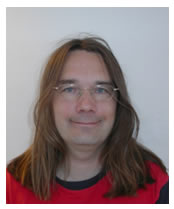
Education
Docent in Engineering Acoustics, KTH, 2002
Technical Doctor in Engineering Acoustics, KTH, 1998
Master of Engineering Physics, KTH, 1987
Research Interests
Structure-borne sound
Vibration isolator characterization
Material acoustics
Pedagogical research and development
Shock wave propagation in particle systems
Teaching
Leif Kari has been involved in nearly all the major courses at MWL - for first to last year and doctoral students - in addition to some courses at the Department of Fibre and Polymer Technology KTH and at the Department of Physics KTH plus two industrial courses and an economy course.
Publication summary
During 2000-10: Total number of peer reviewed journal articles:35; Total number of peer reviewed conference proceeding: 42; Scientific books or chapters: 3
Abstract:
Vibrations generated by a source and transmitted to a receiving structure frequently cause unwanted effects. As a general rule of thumb, low-frequency vibrations may cause fatigue and failure while low-frequency vibrations, that is; structure borne sound, radiate noise. A simple vibration transmission reduction is attained when decoupling the source from receiving structure by mounting it upon vibration isolators. In this lecture, vibration isolation design principles, their application and limitations are taught, including source, vibration isolators, receiving structures and their coupling. Both reductions in fatigue and noise generation are covered, with special applications to the vehicle industry. The intention is to avoid heavy mathematical descriptions while instead focus on the underlying principles and phenomena explained by illustrative examples.
Active Control and its Applications
Xiaojun Qiu Professor
The Institute of Acoustics, Nanjing University, China
xjqiu@nju.edu.cn
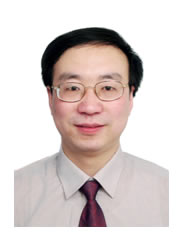
Xiaojun Qiu was graduated in electronics from Peking University, China, in 1989 and received his master degree from the same university in 1992 for his research on speech signal processing. His Ph.D degree was awarded by Nanjing University, China, in 1995 for a dissertation on active noise control. After a short period as a lecturer at Nanjing University, he was awarded a research fellowship from the University of Adelaide, Australia in late 1996, where he worked on various applications of active noise control for nearly six years. In 2002, he accepted a professor position from Nanjing University, China, and has been working in the Institute of Acoustics of Nanjing University as a professor on Acoustics and Signal processing since then. He visited the Institute of Technical Acoustics in Germany as a Humboldt Research Fellow in 2008. His main research areas include passive and active noise and vibration control, room acoustics, electro-acoustics and audio and speech signal processing. He is a member of Audio Engineering Society and International Institute of Acoustics and Vibration. He has authored and co-authored more than 200 technique papers and applied more than 50 patents on audio acoustics and audio signal processing.
Abstract:
Active control is a method of reducing existing noise by the introduction of controllable secondary sources to affect the radiation and transmission of the original primary noise source, and it might provide better solutions to low frequency noise and vibration problems than the current passive noise control methods when there are weight and volume constraints. Interest in active control has grown significantly over the decades, and current applications include active headsets and the active control of noise in ducts, cars and propeller aircrafts. Successful implementation of active control technologies requires a detailed knowledge of noise control principles and electronic control techniques. The purpose of this lecture is to provide the fundamental principles of active control and to introduce its various applications. The history and different physical mechanisms of active control will be introduced first, and then several control architectures such as the feedforward, feedback and hybrid control will be discussed, followed by the derivation of most commonly used Filtered-X LMS algorithm in active control. The design of an effective active noise control system is essentially a multi-variable optimization process, so the hierarchy and stages for development of a typical active control system will be illustrated as well and finally, the lecture ends with a review of some successful and potential active control applications.
Important trends for the NVH supplier industry and development of automotive acoustic control packages
Maurizio Mantovani,NVH Expert
Rieter Automotive Management AG.
maurizio.mantovani@rieterauto.com
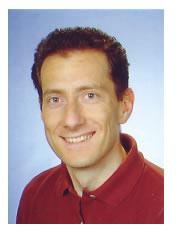
Maurizio Mantovani received doctor degree of vibration mechanics at Turin Politecnico in 1995. His rich experience includes eight years research engineer at Fiat Research Center and twelve years at Rieter Automotive Management AG. Since 2006 He is responsible for R&D Acoustics, Thermal Management and Vehicle benchmarking for Rieter Automotive Division (direct responsibility for Europe, functional responsibility for US, Brazil, China, Japan). The organization includes 10 acoustic laboratories in the world and the acoustics and thermal research team in Switzerland, for a total of about 80 employees. The main responsibilities relate to the definition of the strategic research directions, the relations with the top management and the automotive manufacturers, the budget, the coordination of the teams and the definition and monitoring of the main research, pre-development and development projects with the acoustic departments of the automotive manufacturers; finally, the organization of the Automotive Conference (Switzerland, Tokyo, Detroit), with more than 500 participants.
Abstract:
The main drivers for near future technology developments in the automotive NVH package suppliers industry will be:1) The coming CO2 regulation, encouraging the exploitation of heat-storage in the engine compartment and the development of lightweight aerodynamic/acoustic underbody panels; 2) Exterior noise regulation, which will be tightened and will require increased treatment of the acoustic sources, also because, due to the emissions and fuel consumption reduction measures, engines are becoming noisier; 3) Vehicle hybridisation and electrification.
In front of the growing requirements, the necessity to reduce weight and cost is a strong obstacle to increasing the complexity of the noise treatments. Therefore, the OEMs and their NVH suppliers need to cooperate to develop new concepts for systems and lightweight multifunctional materials, integrating acoustics, thermal insulation, aerodynamics and structural functions. In parallel, more efficient and precise simulation methods are needed, to develop and optimise the NVH treatments of future vehicles, by taking into account the multifunctional nature of the systems.
The simulation tools available for the acoustic design are not always perfect, but there is no alternative and the methods are being constantly improved. At the beginning of the simulation chain, the inputs are vehicle acoustic targets, together with additional functional targets (e.g. thermal insulation, aerodynamics, etc.), weight, packaging space and cost targets. Benchmarking is a fundamental tool in this vehicle target setting process. The virtual NVH development typically deploys vehicle targets into subsystem and components targets. On these bases, the target achieving process starts, with the characterisation and modelling of the structure and acoustic materials, followed by simulation and optimisation of subsystems and components, aimed at the simulation and optimisation of vehicle acoustic performance. The methods, which come into play, are analytical (as for the simulation of acoustic materials and multilayers) and numerical. FE and FMM (fast multipole methods) are used for low-mid frequency analysis, whereas SEA techniques are adopted in the high frequencies. These methods need to be combined with mathematical optimisation procedures and with databases for the material properties.
The main developments in the simulation methods will most probably concern:1) The medium frequencies, where structure borne noise and airborne noise are mixed and the systems display properties in between those typical of deterministic and statistic systems; 2) The prediction of exterior noise; 3) The integration of methodologies aimed at optimisation of different functions.
Acoustics of Heavy Trucks
Ragnar Glav, NVH Expert and Adj. Professor
Scania CV AB and MWL/KTH
Ragnar.glav@scania.com
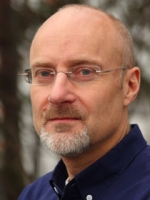
Ragnar Glav is born in Stockholm 1960. He graduated in physics at KTH 1985 where he also worked as research assistant in acoustics until 1986 when leaving for the CAE department at Saab Automotive and the development of numerical methods for sound and vibration analysis. In 1989 Ragnar returned to KTH and MWL for research in flow duct acoustics and presented his PhD thesis 1994. He continued to act as researcher and lecturer at KTH until 1999 when he became technical manager in vehicle acoustics at Scania Trucks. The year 2008 he worked as senior consultant at Tyrens dealing also with building acoustics and environmental noise. 2009 Ragnar returned to Scania, now as head of acoustics. Since 2005 he is also adjunct professor in vehicle acoustics at MWL. To date Ragnar has supervised 23 MSc and PhD students, published 31 papers in journals and at conferences and holds 10 international patents some of which being awarded. He has also contributed to 3 textbooks in acoustics and reviewed numerous papers and dissertations. He has a long experience in lecturing and was awarded "Teacher of the year" at KTH 1997. Ragnar is also developer of the numerical code for flow duct analysis and development of mufflers; SidLab.
Abstract:
The acoustics of heavy trucks is briefed. The targets for noise control of trucks is discussed both with respect to external sound level and legislational requirements for traffic noise as well as regarding sound quality of the truck cabin. The latter of importance not only for the working environment of the driver, but also to communicate the quality and performance of the truck. Some methods used to achieve these targets are presented. In addition a number of typical noise problems of heavy trucks ranging from aeroacoustics to structural dynamics are discussed and exemplified.
Prediction of road traffic noise in urban areas & Road-tyre noise
Wolfgang Kropp,Professor
Chalmers University of Technology,Sweden
wk@ta.chalmers.se
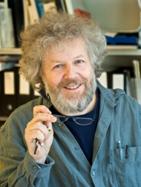
Wolfgang Kropp has been Professor for applied acoustics at Chalmers University of Technology since 1998. He graduated in environmental engineering at the Technische Universität Berlin in 1986. In 1992 he finalized his Ph.D. degree at Prof. Manfred Heckl's Institut für Technische Akustik. The same year he started a postdoctoral period at the Department of Applied Acoustics, Chalmers University of Technology, Sweden. During that period he received the postdoctoral lecture qualification both in Sweden (Docent) and in Germany (Hablitation at the Technische Universität Berlin). Today he is the head of the Division of Applied Acoustics and the Director of the international MSc programme "Sound and Vibration". Since 1998 he has supervised more than 25 PhD students. Main research areas of specialty and interest are structure-borne sound, building acoustics, and different aspects of vehicle acoustics. Since more than 20 years he works with different aspects of tyre/road interaction and it's modeling. For this work he received in 2007 the Håkan Frisinger award (VOLVO Research and Education Foundation).
Abstract:
One third of the European population is exposed to noise levels that are considered annoying. 10% is subjected to levels that carry serious health risks. A conservative estimate is that the social costs of traffic noise are €40 billion per year, of which 90% come from cars and trucks. That is a loss of 0.4% of the total EU GDP. By comparison, noise costs to society are about 30% of the cost of road accidents. In order to reduce road traffic noise both sources and propagation paths have to be controlled. This demands very good prediction tools. The lecture starts from the basics of the propagation of sound from road traffic in order to introduce the demands on good prediction tools. Then a short overview is given concerning the state of the art of prediction tools for road traffic. Special focus is given to typical urban environments with narrow streets, shadowed inner yards, and the application of the quiet side in town planning. The link between such tools and the prediction of annoyance is briefly discussed in the context of soundscape. In addition, based on prediction models typical available tools for the reduction of road traffic noise during propagation are described. This will also include the state of the art design of road surfaces.
Tyre/road interaction is a key element responsible for handling, safety, rolling resistance, wear and finally also noise. The letter concerns both interior noise related to driver comfort and exterior noise leading to the fact that tyre/road interaction is the dominating source of road traffic for driving speeds above 30 -50 km/h for passenger cars and 60-80 km/h for heavy-duty vehicles. The lecture will introduce to the vibration properties of tyres and their modeling. It will also Contact modeling between tyre and road both for normal and tangential contact are discussed and demonstrated with results for some selected cases. The transfer of forces in the contact to the hub is depending on the very first structural modes but also on the first modes in the air cavity inside the tyre. Examples of typical hub forces for a rolling tyre are presented. Special focus is given to the coupling between tyre vibrations and radiated sound. The key question in this context is which part of the vibrations is actually responsible for the radiated sound power. Finally the acoustic performance of tyres is related to other performance criteria such as rolling resistance or wear. An example concerning pattern optimization for truck tyres is presented. Finally the question is discussed whether there exists a potential for a technology change in tyre and road design leading to a substantial noise reduction.
Aerodynamic Noise and Applications
Xiaodong Li, Professor
School of Jet Propulsion, Beihang University
Beijing, P.R.CHINA
lixd@buaa.edu.cn
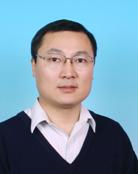
Dr. Xiaodong Li is a professor in the School of Jet Propulsion at the Beihang University (BUAA). He graduated from BUAA with Bachelor's, Master's and Ph.D.'s degrees in 1989, 1992 and 1995, respectively. He has been a guest scientist at German Aerospace Research Center (DLR) in 1997 and subsequently at Technical University of Berlin. Dr. Li's research interests are in the development of new theories and numerical methods for aeroacoustics, especially for jet noise, duct acoustics, turbomachinery noise and airframe noise. His research has been funded by the National Natural Science Foundation of China (NSFC), the National Basic Research Program of China (973 Program) and aerospace industries. Currently he is an Associate Fellow of AIAA and serves as an international member of the AIAA technical committee of aeroacoustics. Dr. Li also serves on the Editorial Board of the International Journal of Aeroacoustics.
Abstract:
Aerodynamic noise, as a kind of harmful by-products from wide industrial problems has received much attaintion since Lighthill's pioneering work at the early of 1950s. Duing the past 60 years, many theoretical, numerical, experimenal approches and control techniques have been developed for the understanding and control of various aerodynamic noise generation and propagation phenomena.
This lecture will consists of two parts. The first part will mainly introduce the classical aeroacoustics theories developed in the last six decades including the acoustic analogy theories of Lighthill equation, Ffowcs Williams & Hawking equation and some other variations. Some examples will be given on how to apply these theories to engineering problems. The second part of this lecture will introduce the computational aeroacoustics (CAA) which started at the early of 1990s. Different from classic aeroacoustics theories, CAA is based on the basic principles of fluid mechanics and designed for the description of the generation and propagation of aerodynamic noise numerically. The concepts of numerical dispersion and dissipation, high order spatial and time discretization, shock capturing method and non-reflective boundary conditions will be introduced following by some application examples to the real world.
Porous material for control of air-borne sound
Xiaolin Wang, Research Professor
The Institute of Acoustics, Chinese Academy of Sciences
wangxl@mail.ioa.ac.cn
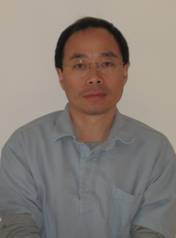
Xiaolin Wang studied engineering mechanics at the University of Science and Technology of Chengdu (now Sichuan University). He obtained his MEng from the Institute of Mechanics, Chinese Academy of Sciences, where upon graduation he continued to work in the research areas of shock wave propagation in solids, hyper-velocity impact and shock wave consolidation. He obtained his PhD in applied mechanics from the University of Cambridge in 1998 with a thesis about constitutive relations and elastic waves in cellular solids. He then stayed on at the university as a Research Associate studying acoustic and heat transfer properties of metal foams. In 1999, he moved on as an Assistant Professor to Nanyang Technological University, Singapore. His research then was about acoustic properties and impact characteristics of porous metals. In 2004, he joined the Institute of Acoustics as an Associate Professor. Since then he has been engaged in projects relating to noise control and sound absorbing materials.
Abstract:
Porous materials have long been used to absorb sound and reduce noise, such as the development of interior materials for automobiles. This lecture will give a brief overview of various porous materials, how they absorb sound and what characteristic parameters are important in the noise reduction. Theories dealing with various types of porous materials will be introduced. Experimental methods will be presented to demonstrate how to measure relevant parameters. Examples will be given to demonstrate how to identify important characteristics, to incorporate the measured characteristics to corresponding theories, and to optimize these characteristics in order to achieve a satisfactory noise reduction.
Noise control activities for high speed trains
Fusheng SUI, Research Professor
The Institute of Acoustics, Chinese Academy of Sciences
sui@mail.ioa.ac.cn
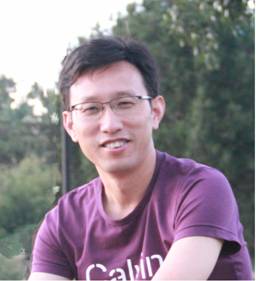
Fusheng SUI graduated in mechanical engineering from Shandong University, China, in 1991, and received his Ph.D in Acoustics at Ecole Centrale de Lyon, France. After several years research in industrial projects and EU programs in France, he joined Institute of Acoustics, Chinese Academy of Sciences in 2007 and works as a professor on Vibration and Acoustics.
His main research interests include vibration control, room acoustics, mid-high frequency dynamics, power flow and energy analysis of complex structures. Several technique papers were published on these subjects. His present activity focuses on the vibration and noise problem in high speed train.
Abstract:
The floors on the high speed trains are often constructed from composite aluminium extrusions. The noise issue is a major concern associated with such configuration. The internal plate lattice physically bridges the top and bottom panels which results in a poor acoustic performance. Both experimental work and numerical study were carried out on the panel aimed at developing a systematic way of predicting and validating acoustic performance of such configuration. Experimentally, transfer mobility and vibration energy of the panel were measured for a given mechanical excitation. The reciprocal method was used to estimate the radiation efficiency of the panel. Later studies coupled FEM with Statistical Energy Analysis (SEA) and Boundary Element method (BEM) to predict the sound radiation from the aluminium extrusion to cover higher frequencies. The experimental works is also presented, and some efforts to reduce the vibration and noise in Chinese high speed train are introduced.

